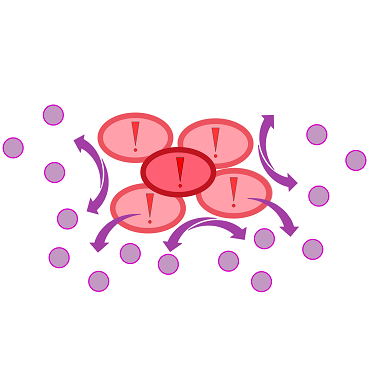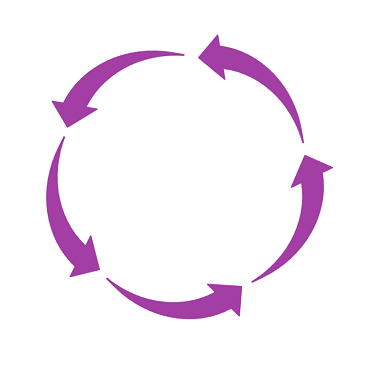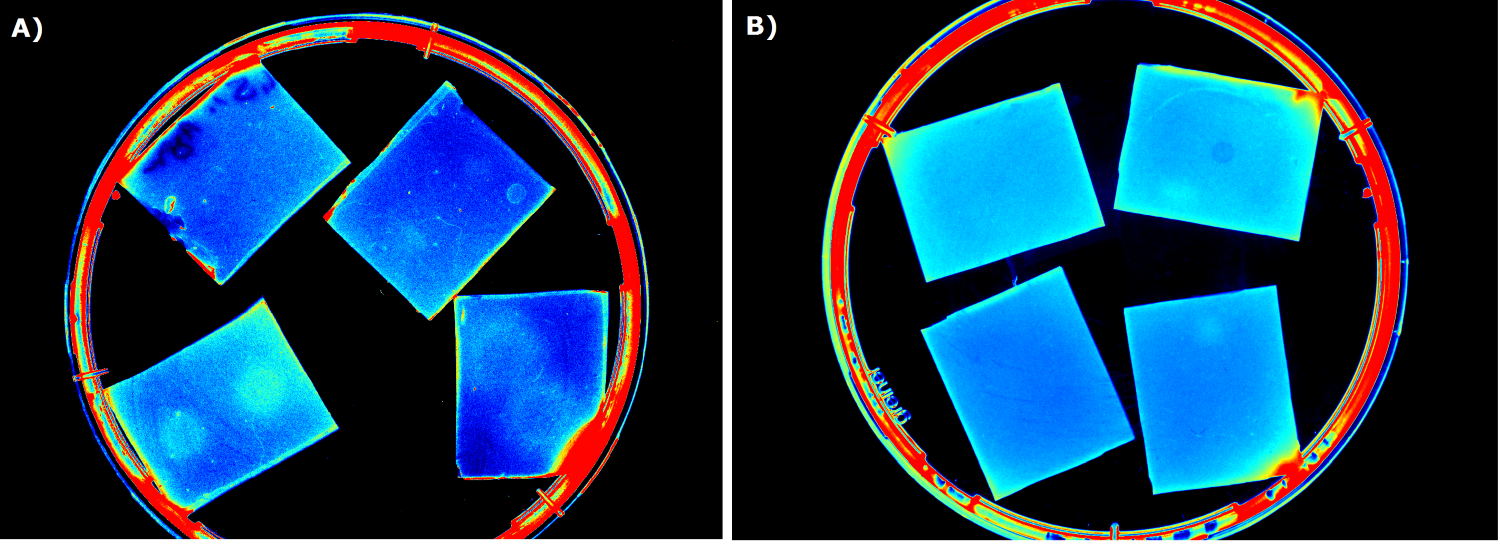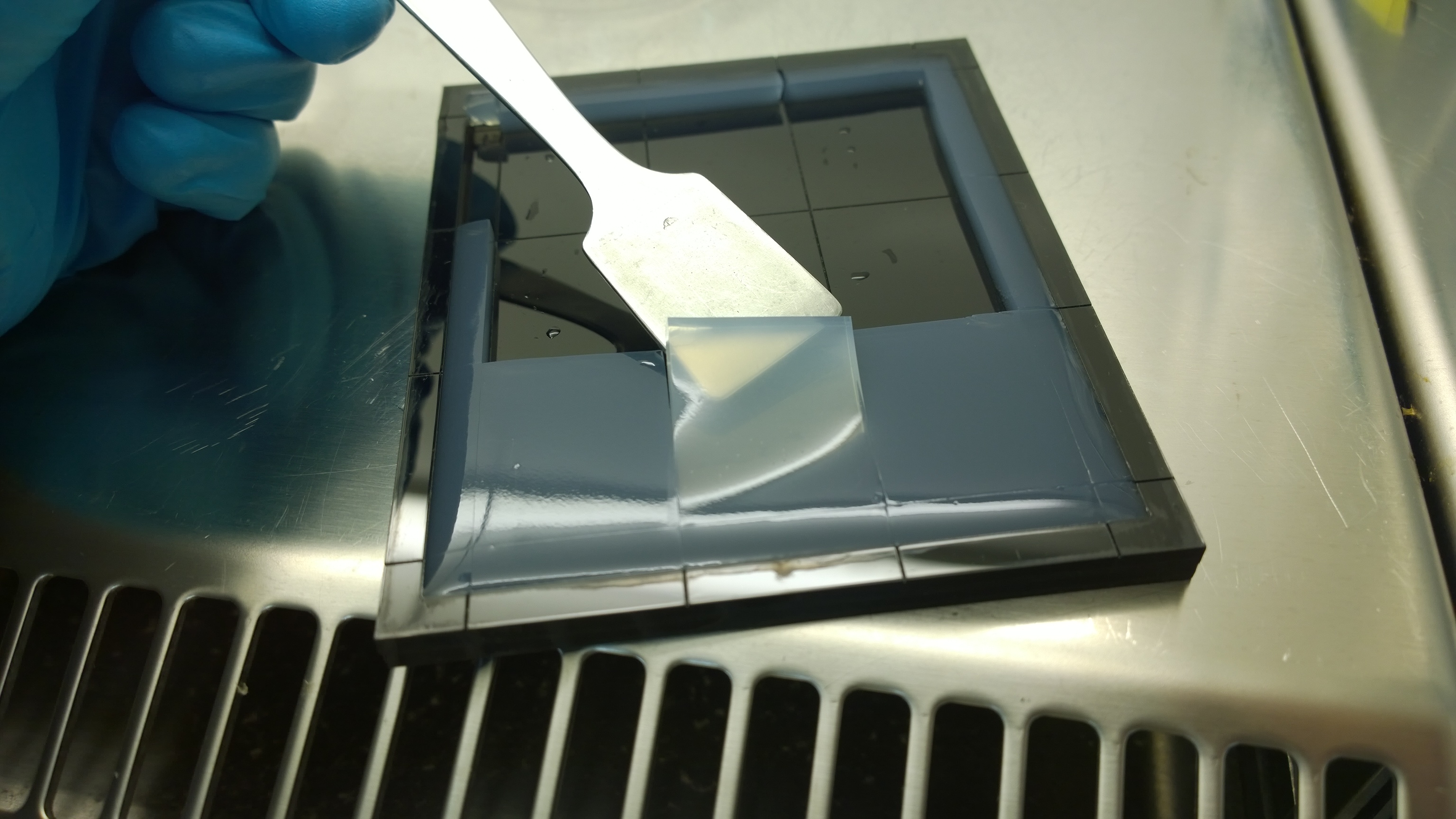Team:Aachen/Project/2D Biosensor
From 2014.igem.org
AZimmermann (Talk | contribs) (→Comparing the REACh construct with K731520 and I746909) |
(→Development & Optimization) |
||
| Line 111: | Line 111: | ||
{{Team:Aachen/FigureFloat|Aachen_5days_K131026_neb_tb_1,5h.jpg |title=K131026 in NEB induced after 5 days |subtitle= after storage for 5 days at 4 °C the right chip was induced with 0.2 µl of 500 µg/ml HSL, image was taken after 1.5 h |width=300px}} | {{Team:Aachen/FigureFloat|Aachen_5days_K131026_neb_tb_1,5h.jpg |title=K131026 in NEB induced after 5 days |subtitle= after storage for 5 days at 4 °C the right chip was induced with 0.2 µl of 500 µg/ml HSL, image was taken after 1.5 h |width=300px}} | ||
Further experiments were conducted to test long-time storage of the sensor chips. Storage at -20 °C resulted in the loss of our sensor cells. Adding 5-10% (v/v) glycerol ensured survival of the sensor cells, but resulted in an expression stop of fluorescence proteins. Thus, the idea of long time storage of the sensor chips had to be passed on. However, it was possible to store ready-to-use sensor chips for 2 days at 4 °C when using LB medium and storage for 5 days was possible with chips made from TB medium. | Further experiments were conducted to test long-time storage of the sensor chips. Storage at -20 °C resulted in the loss of our sensor cells. Adding 5-10% (v/v) glycerol ensured survival of the sensor cells, but resulted in an expression stop of fluorescence proteins. Thus, the idea of long time storage of the sensor chips had to be passed on. However, it was possible to store ready-to-use sensor chips for 2 days at 4 °C when using LB medium and storage for 5 days was possible with chips made from TB medium. | ||
| - | |||
In our device ''WatsOn'', optimized wavelengths of 450 nm and 480 nm were used for excitation of iLOV and GFP, respectively. When exposed to either excitation wavelength the TB medium showed minimal background fluorescence and no difficulties were observed in cultivation of our ''Cellocks''. Furthermore, a reduction of background fluorescence compared to TB medium was observed when using LB medium for sensor chip manufacturing in combination with fluorescence evaluation using ''WatsOn''. | In our device ''WatsOn'', optimized wavelengths of 450 nm and 480 nm were used for excitation of iLOV and GFP, respectively. When exposed to either excitation wavelength the TB medium showed minimal background fluorescence and no difficulties were observed in cultivation of our ''Cellocks''. Furthermore, a reduction of background fluorescence compared to TB medium was observed when using LB medium for sensor chip manufacturing in combination with fluorescence evaluation using ''WatsOn''. | ||
| + | |||
=== Agar Concentration === | === Agar Concentration === | ||
Revision as of 13:34, 16 October 2014
|
|
|
|
|
 "
"










